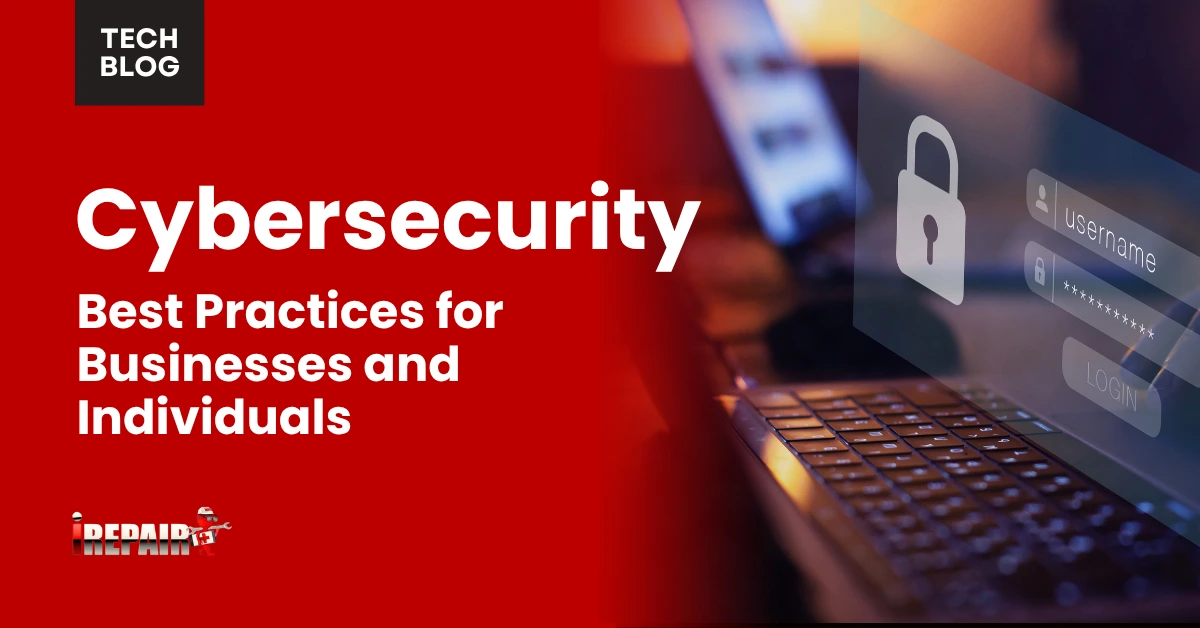Cybersecurity Best Practices for Businesses and Individuals
To protect yourself from cyber threats, you’ll need multiple layers of security. Start with strong, unique passwords and enable multi-factor authentication on all accounts. Keep your software updated, use reliable antivirus protection, and encrypt sensitive data. Regular backups, both local and cloud-based, safeguard against data loss. Train yourself to spot phishing attempts and suspicious links. Following these foundational steps will open the door to extensive digital protection.
Essential Security Measures for Digital Protection
With cyber threats evolving daily, implementing fundamental security measures isn’t just recommended; it’s critical for your digital safety. Strong data protection and privacy management start with creating robust passwords and enabling multi-factor authentication across all your accounts. You’ll need to regularly update your software, install security patches, and maintain current antivirus protection.
Following cybersecurity best practices means securing your Wi-Fi networks, encrypting sensitive data, and being vigilant about phishing attempts. Don’t forget to back up your important files regularly and store them securely. Whether you’re running a business or protecting personal information, these essential measures create a strong foundation for your digital security. Remember to review and update these protective measures periodically as new threats emerge.
Building a Strong Password Management Strategy
Since passwords remain your first line of defense against unauthorized access, creating and managing them is crucial for your digital security. To build robust, secure passwords and authentication practices, use a combination of uppercase and lowercase letters, numbers, and special characters, aiming for at least 12 characters in length.
Don’t reuse passwords across accounts, and consider implementing a reliable password manager to generate and store complex credentials securely. As part of employee cybersecurity awareness, your team must understand the importance of regular password updates and the risks of sharing login credentials. Enable multi-factor authentication whenever possible, adding an extra layer of security beyond traditional passwords. Remember to change default passwords on all devices and regularly audit your password practices to identify potential vulnerabilities.
Safeguarding Data Through Regular Backups
Strong passwords protect your accounts, but they won’t help if your data gets corrupted or lost. That’s why you need to back up data regularly as a vital part of your data privacy protection tips arsenal. Create both local and cloud backups of your important files, ensuring you have multiple copies in different locations.
Set up automated backups on a consistent schedule, daily for critical business data and weekly for personal files. Choose secure cloud services that offer encryption and enable versioning to recover previous file versions if needed. For local backups, use external hard drives or network-attached storage devices, keeping them disconnected from your main system when not in use. Remember to test your backups periodically by attempting to restore files to verify they’re working correctly.
Recognizing and Avoiding Common Cyber Threats
Today’s cyber threats come in many deceptive forms, from sophisticated phishing scams to stealthy malware attacks. To protect yourself, you’ll need to implement effective online threat prevention strategies, starting with recognizing common attack patterns. Watch for urgent emails requesting sensitive information, unexpected password reset notifications, or suspicious attachments from unknown senders.
When practicing cyber hygiene for remote work, always verify sender identities before clicking links or downloading files. Keep your work and personal accounts separate, and don’t use public Wi-Fi for sensitive transactions. If something seems off about a message or request, trust your instincts and double-check through official channels. Remember that legitimate organizations won’t ask for passwords or financial details via email or text messages.
Training and Education for Enhanced Security Awareness
Security awareness training forms the backbone of any effective cybersecurity strategy. By investing in thorough online security awareness programs, you’ll equip your team with essential knowledge to recognize and respond to digital threats. Regular training sessions should cover current cyber safety tips for businesses, including phishing detection, password management, and safe browsing practices.
Make sure your training approach combines theoretical knowledge with practical exercises. Implement simulated phishing attacks to test employee vigilance, and provide immediate feedback on their responses. You’ll want to schedule refresher courses quarterly to keep security protocols fresh in everyone’s minds. Consider creating a reward system for employees who consistently demonstrate good security practices or report potential threats. Remember, well-trained staff members become your first line of defense against cyber attacks.
Frequently Asked Questions
How Often Should Businesses Conduct Cybersecurity Audits?
You should conduct essential cybersecurity audits at least quarterly, with continuous monitoring in between. Don’t forget monthly vulnerability scans and annual penetration testing. For high-risk industries or those handling sensitive data, consider more frequent audits. It’s also paramount to perform immediate audits after any system changes, security incidents, or when new threats emerge. Remember, regular audits are your best defense against evolving cyber threats.
What Legal Requirements Exist for Reporting Data Breaches?
You’ll find that data breach reporting requirements vary by jurisdiction, but most laws mandate prompt notification to affected individuals and relevant authorities. In the US, all 50 states have their own breach notification laws, while the GDPR requires reporting within 72 hours in the EU. You’re typically required to report breaches involving personal data, financial information, or healthcare records. Failing to report can result in significant fines.
Can Encrypted Data Be Recovered if Encryption Keys Are Lost?
If you’ve lost your encryption keys, recovering encrypted data is typically impossible; that’s the whole point of strong encryption. While there might be some hope with older or weaker encryption methods, modern encryption algorithms like AES-256 are mathematically designed to be unbreakable without the key. That’s why it’s vital to safely store your encryption keys and consider key escrow solutions for business-critical data.
How Do Cyber Insurance Policies Protect Against Financial Losses?
Cyber insurance policies can protect you against various financial losses resulting from digital incidents. You’ll typically be covered for costs related to data breach investigations, customer notifications, legal fees, and business interruption. Many policies also cover ransomware payments, credit monitoring services for affected customers, and PR expenses to manage reputational damage. However, you’ll need to maintain specific security standards to keep your coverage valid.
What Are the Cybersecurity Implications of Employees Using Personal Devices?
When you allow employees to use personal devices, you’re facing significant security risks. Their devices may lack proper security controls, contain malicious apps, or connect to unsafe networks. You’ll need to implement mobile device management (MDM) solutions, require device encryption, and establish clear BYOD policies. There’s also an increased risk of data leakage when employees leave, since company information may remain on their personal devices.







